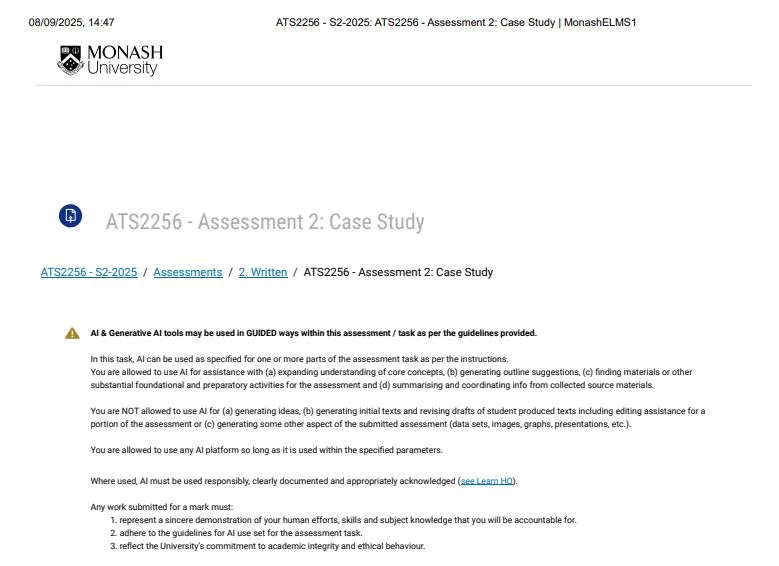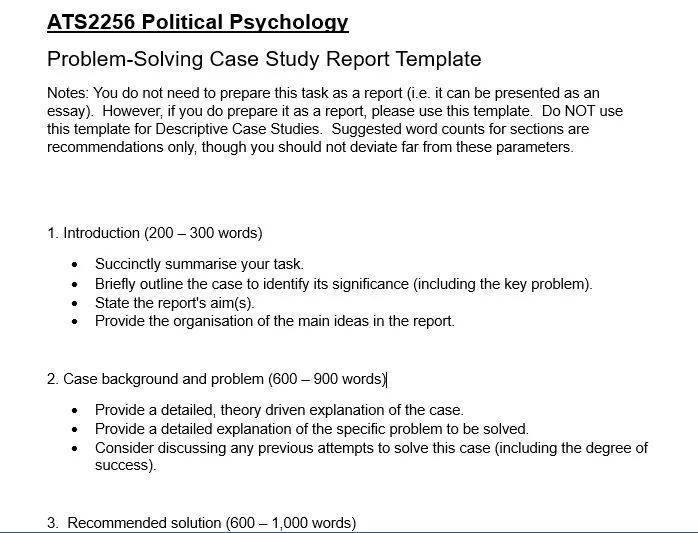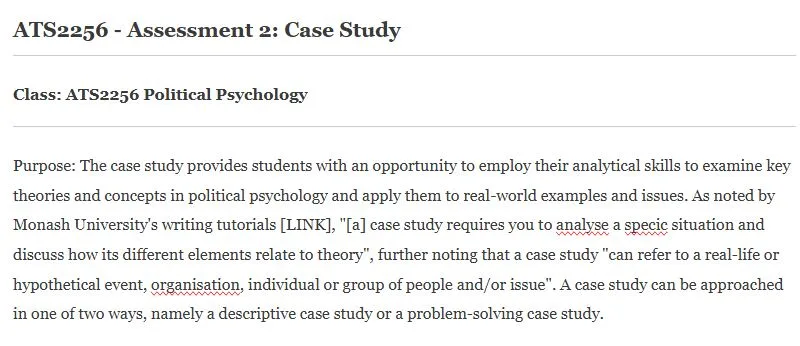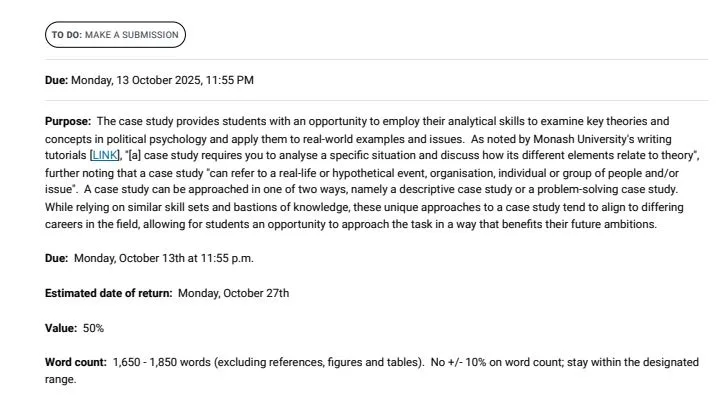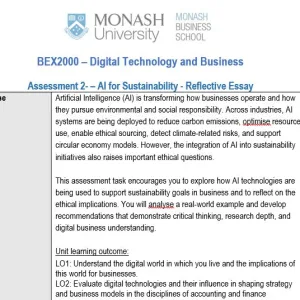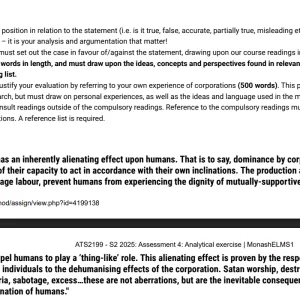ATS2256 – Assessment 2: Case Study
Class: ATS2256 Political Psychology
Purpose: The case study provides students with an opportunity to employ their analytical skills to examine key theories and concepts in political psychology and apply them to real-world examples and issues. As noted by Monash University’s writing tutorials [LINK], “[a] case study requires you to analyse a specic situation and discuss how its different elements relate to theory”, further noting that a case study “can refer to a real-life or hypothetical event, organisation, individual or group of people and/or issue”. A case study can be approached in one of two ways, namely a descriptive case study or a problem-solving case study.
While relying on similar skill sets and bastions of knowledge, these unique approaches to a case study tend to align to differing careers in the eld, allowing for students an opportunity to approach the task in a way that benets their future ambitions.
- Introduction (200 – 300 words)
- Succinctly summarise your task.
- Briefly outline the case to identify its significance (including the key problem).
- State the report’s aim(s).
- Provide the organisation of the main ideas in the report.
- Case background and problem (600 – 900 words)
- Provide a detailed, theory driven explanation of the case.
- Provide a detailed explanation of the specific problem to be solved.
- Consider discussing any previous attempts to solve this case (including the degree of success).
- Recommended solution (600 – 1,000 words)
- Offer a detailed and theory-driven solution to the specific problem.
- Justify the varying components of your solution using theory and, where possible, relevant evidence.
- Pro-Tip: Theory should be same as, or at least have key conceptual overlap with, the theory used in Section 2. Otherwise, the report does not really make sense from one section to the next. Said differently, a convincing solution to the problem should have something to do with why the problem happened in the first place.
- Discuss how success of the solution could be measured or observed.
- Acknowledge the limitations of your solution
Solution
This problem-solving case study examines contemporary jihadist terrorism. The significance is twofold: terrorism’s harms are diffuse, yet many responses remain narrow, reactive, and weakly evaluated, risking a cycle of alienation and violence (Holbrook & Horgan, 2019; McBride et al., 2022). The key problem is how to disrupt pathways into violence without amplifying grievances or compromising community trust, given ideology’s fluid role and the complexity of today’s networked information environment (Holbrook & Horgan, 2019; Archetti, 2015). The report aims to: (1) present a theory-driven account of radicalisation dynamics; (2) specify the concrete problem…Get full solution for $15.00
